Fishing had been deemed essential by the Tallahassee Oracles (and it truly is) during the lockdown the of Florida beaches. So, Baz and I went fishing one glorious day. The weather was just great (disclaimer — whenever a fisherman begins a sentence with the bloody weather you know she/he in all likelihood got skunked), and the visibility into the water was fantastic. Even I could clearly see the fish. There were a lot of redfish and jack crevalle schools milling about. We just anchored the boat in such a way that we expected the jacks to swim on the outside of us, and they did, one school after the other. You just have to cast to those big badass fish, and when you spot them, the urge is immediately there. We decided to use a big popper called Bob’s Banger, which is only cast by folks with masochistic tendencies (sadomasochistic when we hook our company). These big and heavy poppers are a pain in the – wherever you like your pain best – to cast (how to cast big poppers – see at end). For the first school of fish we cast the fly in front of the fish as they bore down on us, but the line did spook them and that was that.
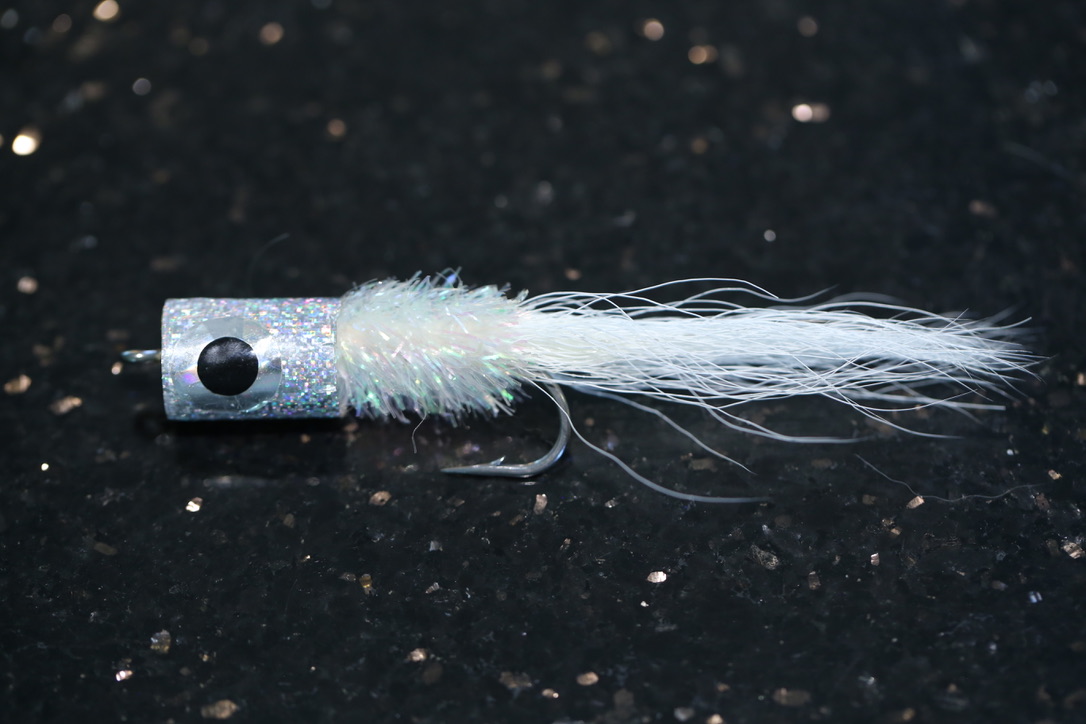
When anglers first see the jacks come in formation in two – three feet of water, they often just freeze. They just stare – eyes popping, mouth gaping, sphincters can go iffy, and they are totally unable to get off a cast. Those beginners who unexpectedly do get off a cast bungle it without fail. There is usually only one chance to deliver a decent cast to each school. The schools were coming thick and fast at us, and all the jacks swam the same way as you can see below. We decided to cast the popper straight out and have it waiting in the blue part you can see below. The rationale was to cast an unhurried long cast where we could strategically place the fly where we wanted it. That done, we just waited for the next school to come cruising.
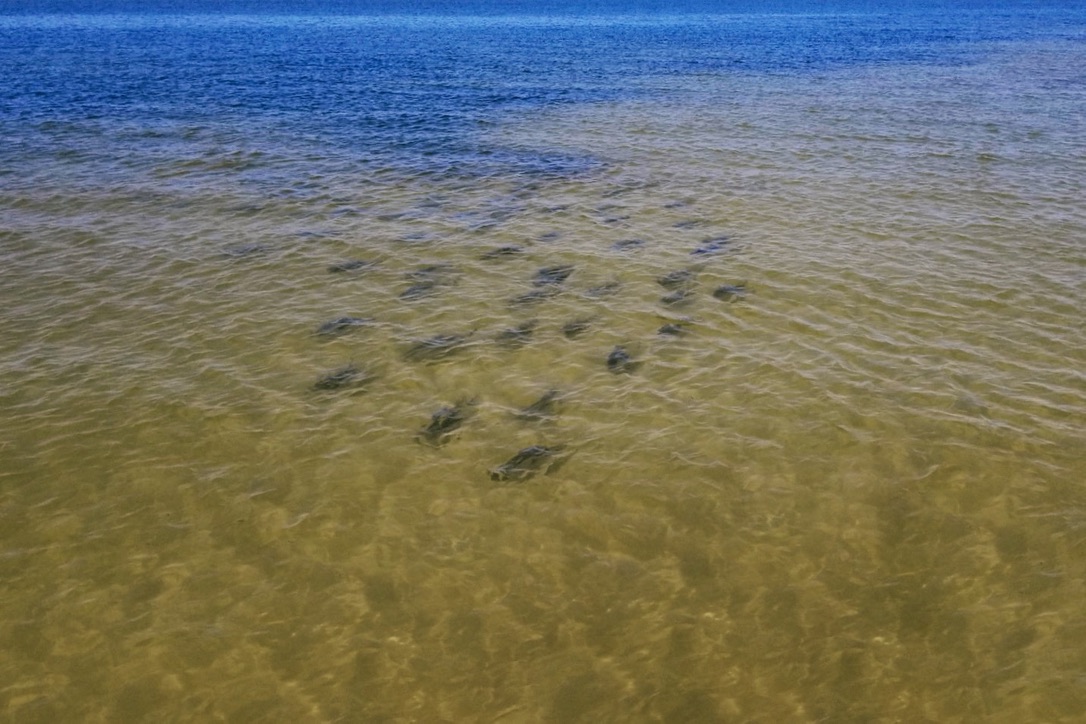
This school of jacks showed up as predicted, and you can see the line that has just been biding its time. When the time was right the popper popped away, and some fish just ignored it, and swam under the line, but suddenly a bruiser in the 20-30 pound class swam under the fly. Suddenly the jack turned back and up, and came to the surface just in front of the popper, in precisely the same way a big salmon takes a fly on the surface. Baz and I both saw this magnificent take but it happened so quickly that it was impossible to catch in a photo.
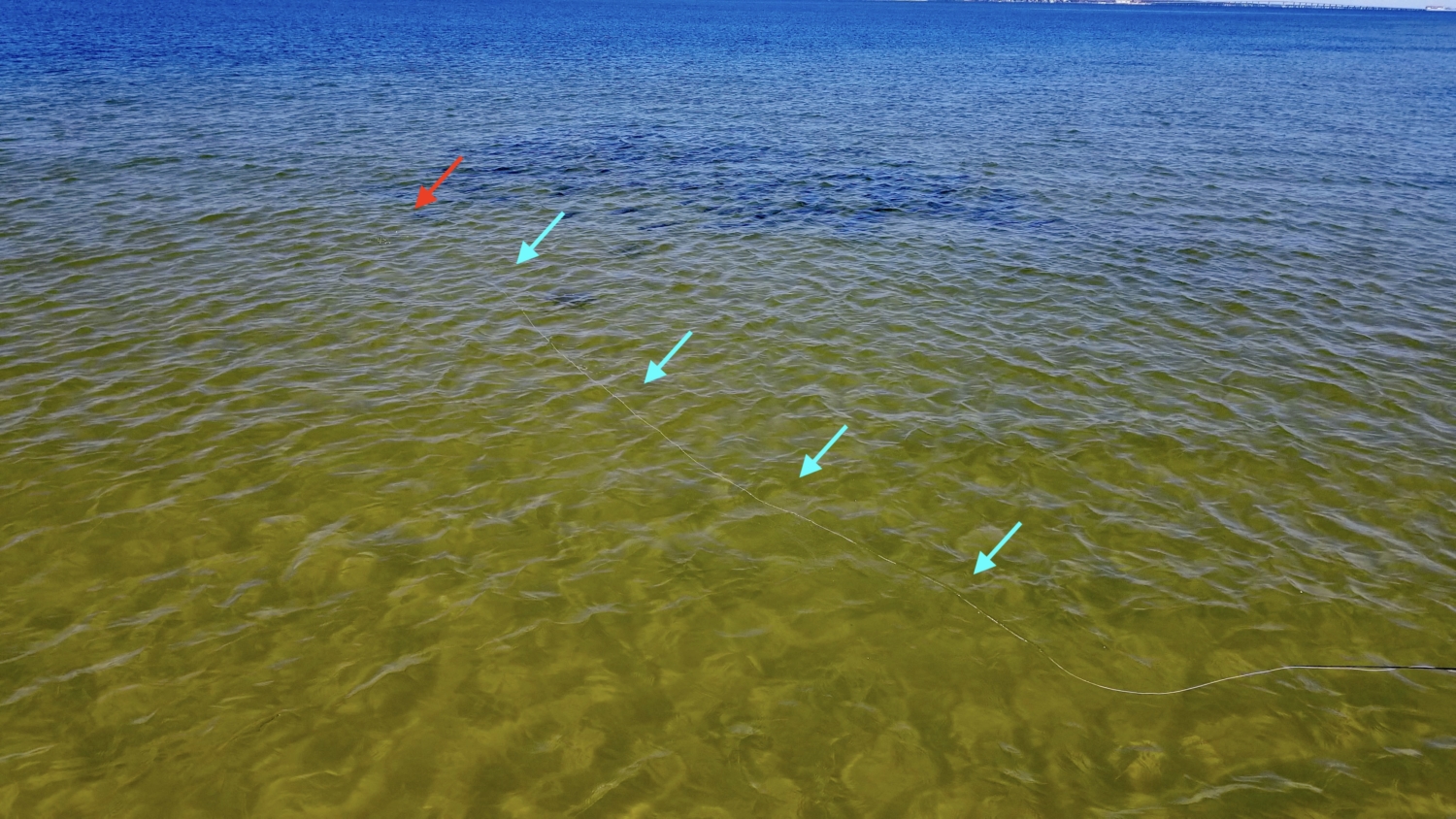
I set the hook and the fight was on. Jacks simply take a very dim view on being hooked, and they are fast, strong, and mean, but not impossible to deal with. After a while the fish tired and I eased it towards the boat. Baz grabbed the leader and was ready with the net in the other hand. And presto — the fish broke off. He turned around and sternly asked “Jonas – what was the pound strength of that leader?” (he knows that I sometimes just slap on whatever I happen to have in my pocket). Eyes downcast and somewhat sheepishly I murmured “maybe ten pound.” That answer just earned me THE LOOK.
Damn – in the doghouse again. But I managed to rescue my tattered standing, and finally pulled off a really long cast, with a backhand delivery, to hook a redfish that I managed to land; proof see below.
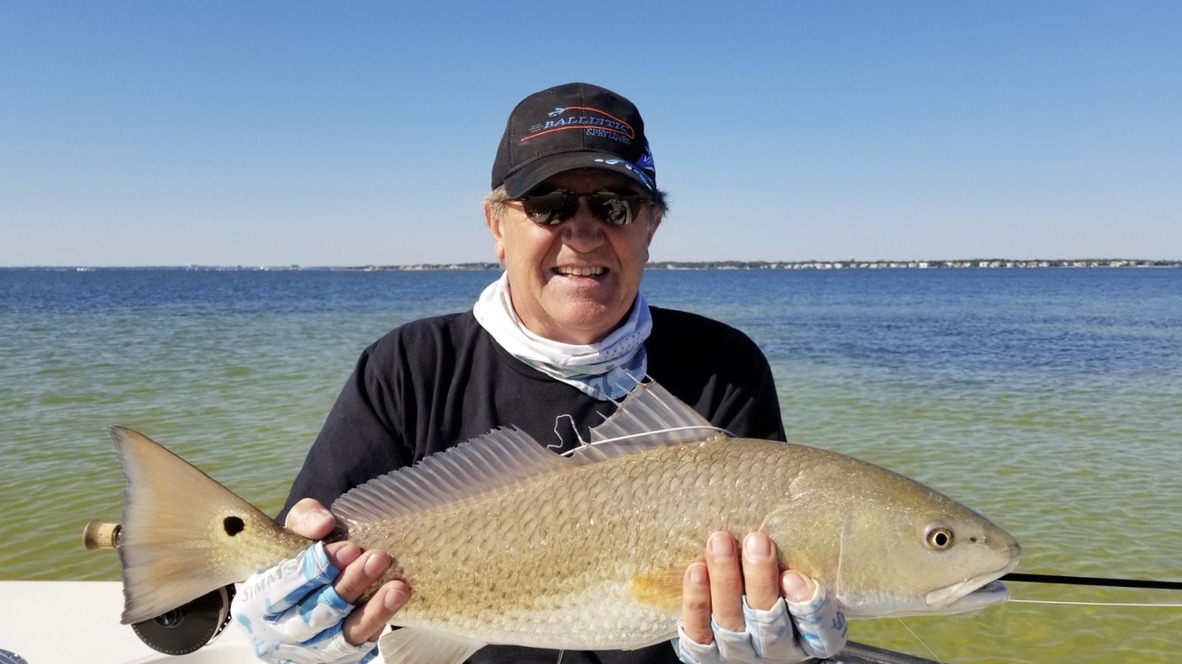
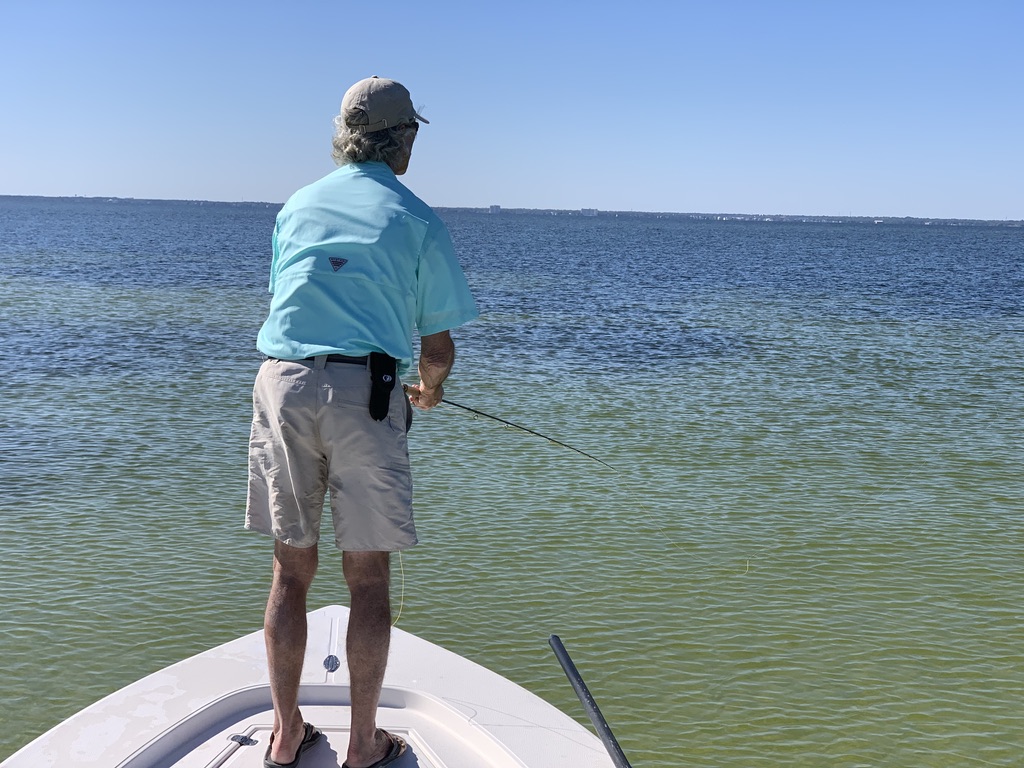
This blog is deficient if I do not honor the jacks with a picture. The jacks are a force to be reckoned with for sure, and here is a picture of one of them.
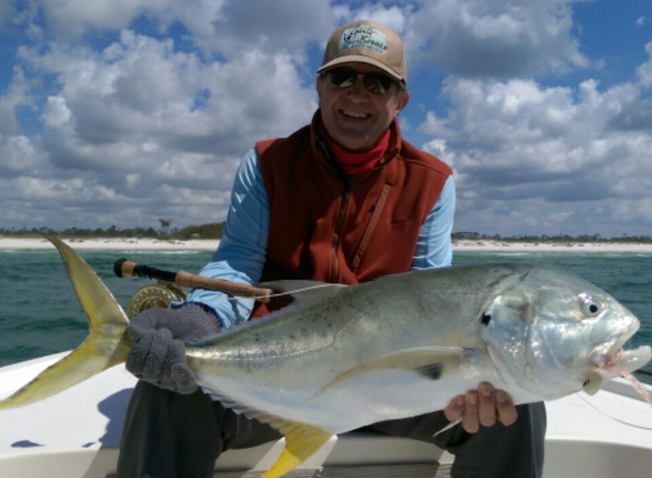
The jack crevalle is in the jack family with the GT (giant trevally). GTs get much more press, but are no more of a game fish than our crevalle.
https://en.wikipedia.org/wiki/Crevalle_jack
https://en.wikipedia.org/wiki/Giant_trevally
How to cast big and heavy air resistant flies
The Bob’s Banger in the first picture weighs in at 0.073oz or 2.08gr. So, it has considerable mass and a lot of drag, too, being 4 inches long (10cm). The considerations as to a fly’s “cast-ability” are its weight and its drag (air resistance). This fly is both very heavy and also has a lot of drag. I would advise using at least a ten-weight line or bigger if you have it for such a beast (mass moves mass). The leader that works best has the thickest butt you can find (again more mass in the leader – SA now makes a leader with 0.03” butt). Forget about a long leader, but instead shorten your leader to 7.5′. Now you are in the game, but if you try to cast this beast the “usual way” it will probably not go well. I advise you to open your loop and lob the popper out there. The cast I am referring to is the Belgian cast or the constant tension cast. Beware of casting videos where the teacher says “horizontal back – then up and over” for instance. If the line is horizontal and the caster points the rod straight back, all tension in the rod is gone and the fly will ricochet. Start the backcast horizontally, and when the rod tip is coming to the three a’clock position you start to bring the tip up. At that point, the heavy fly will swing up high – you come to the delivery position and go straight into the forward cast. And there should be no pause. Here is the best Belgian video I can find.
https://www.thecampflyfishingschool.com/pages/belgium-cast
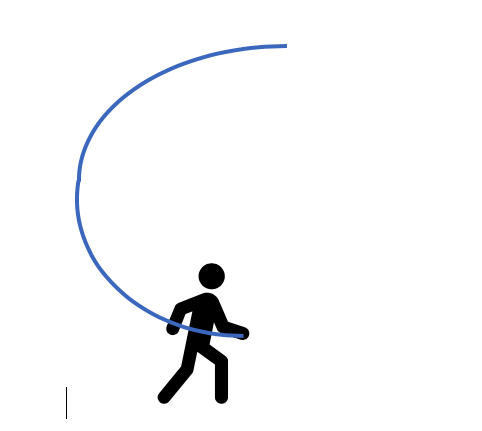
English consultant: My good retired neighbor Joe

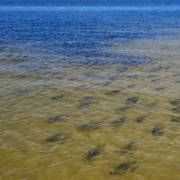 Jonas Magnusson
Jonas Magnusson